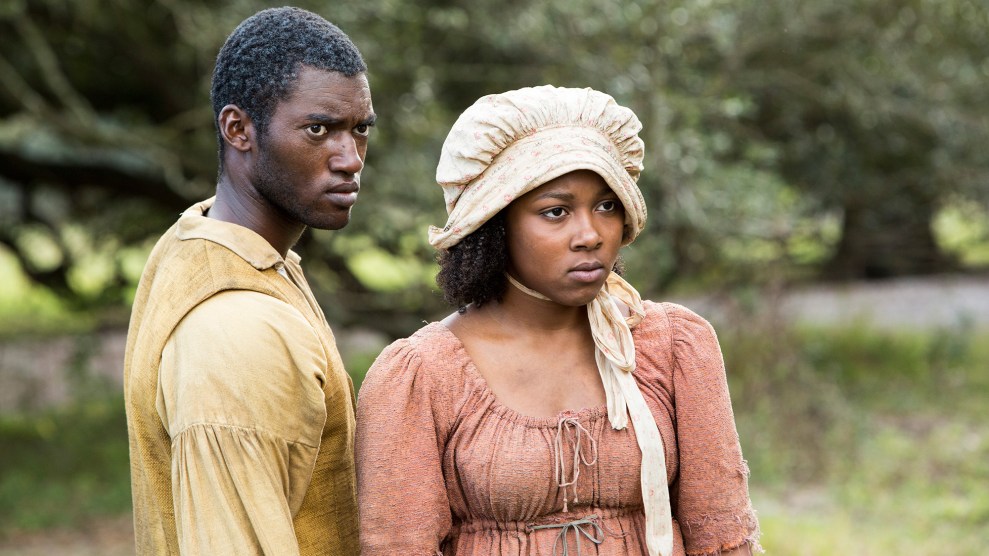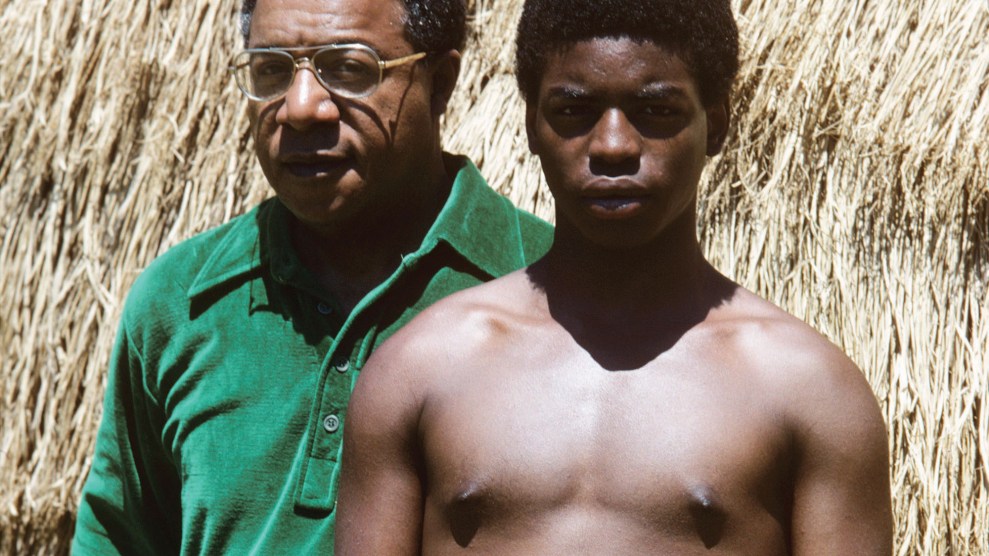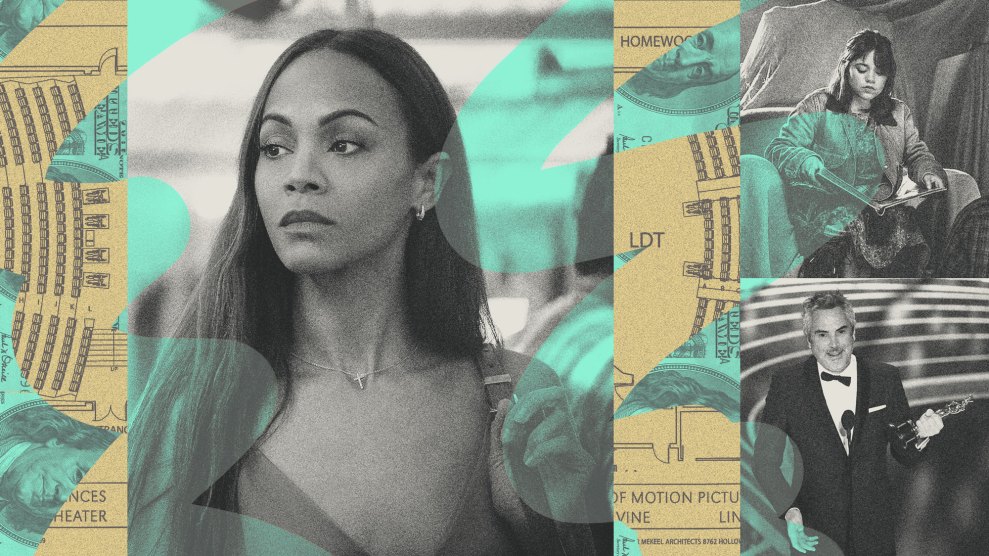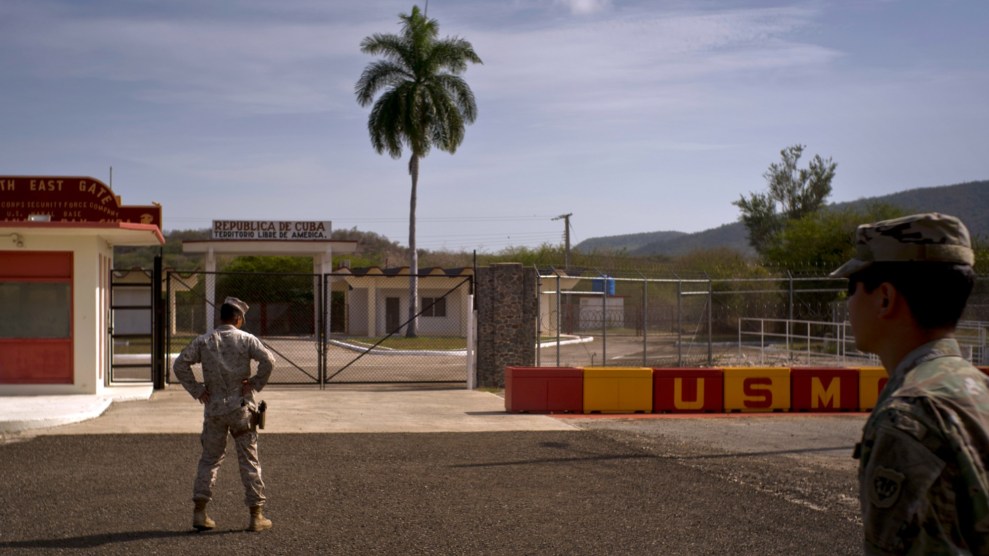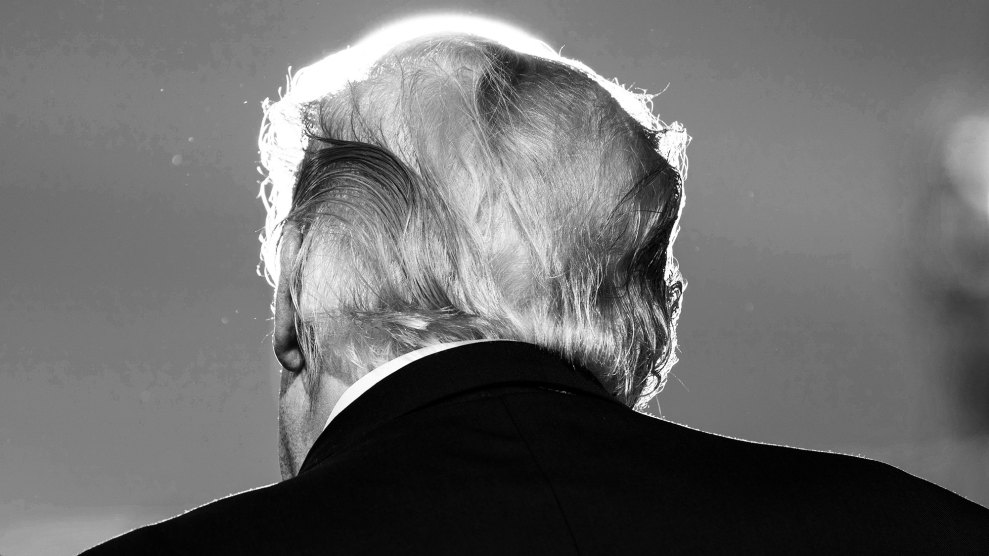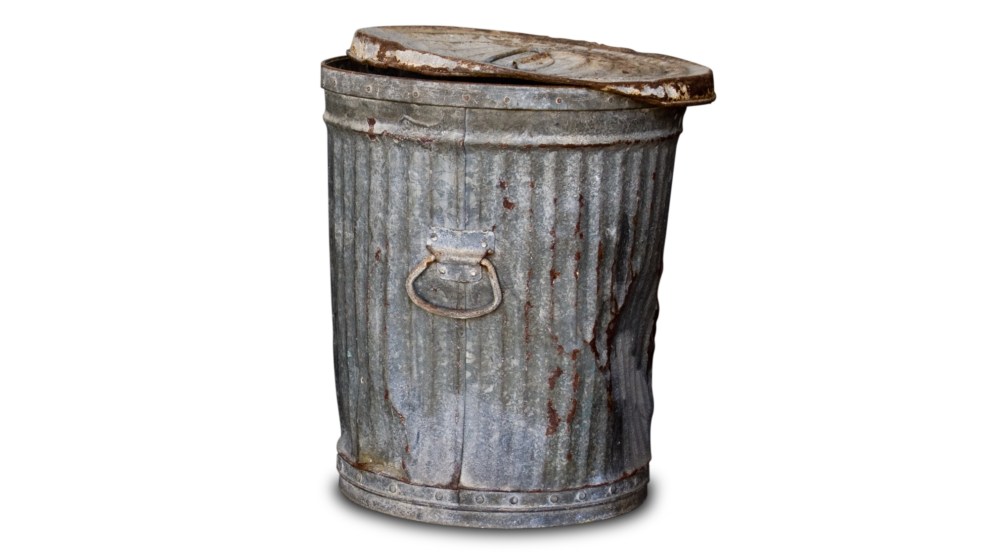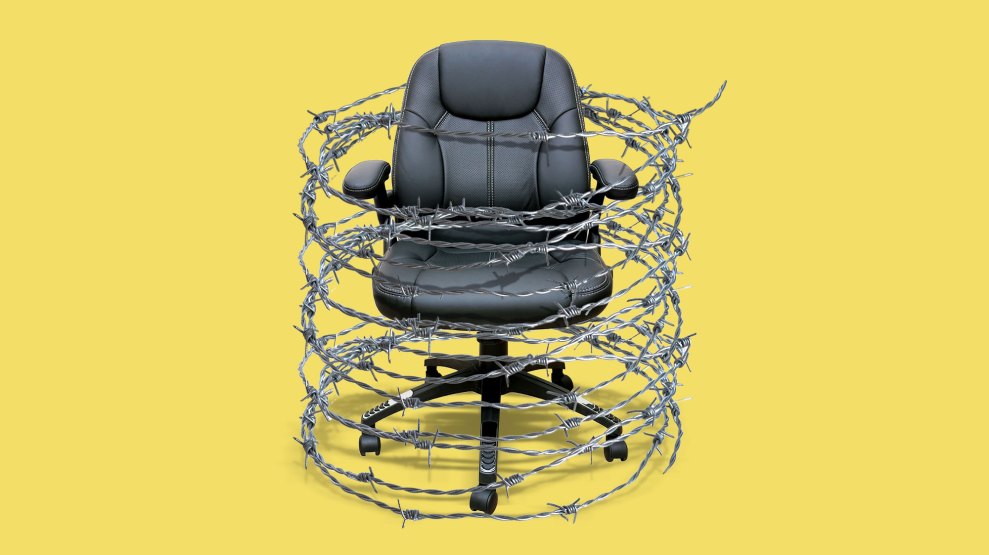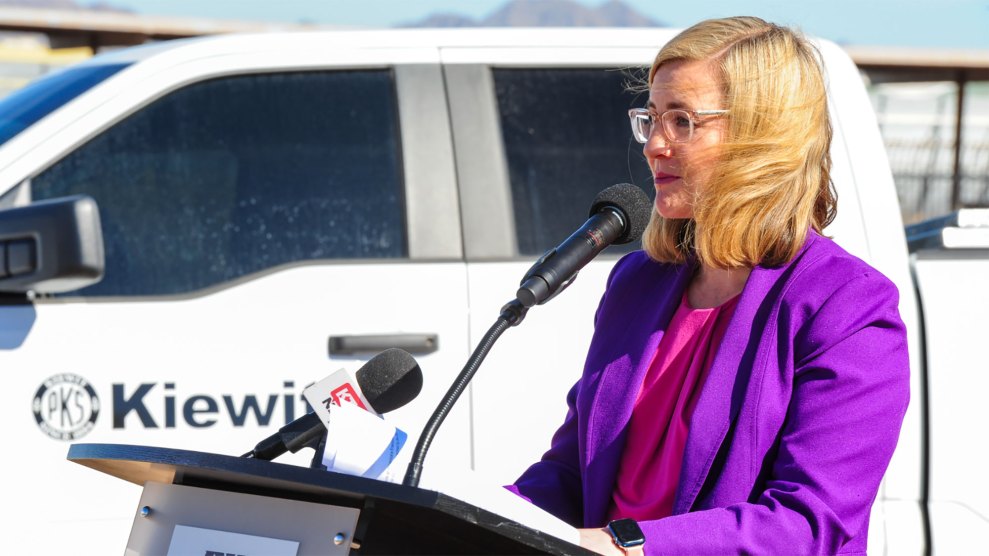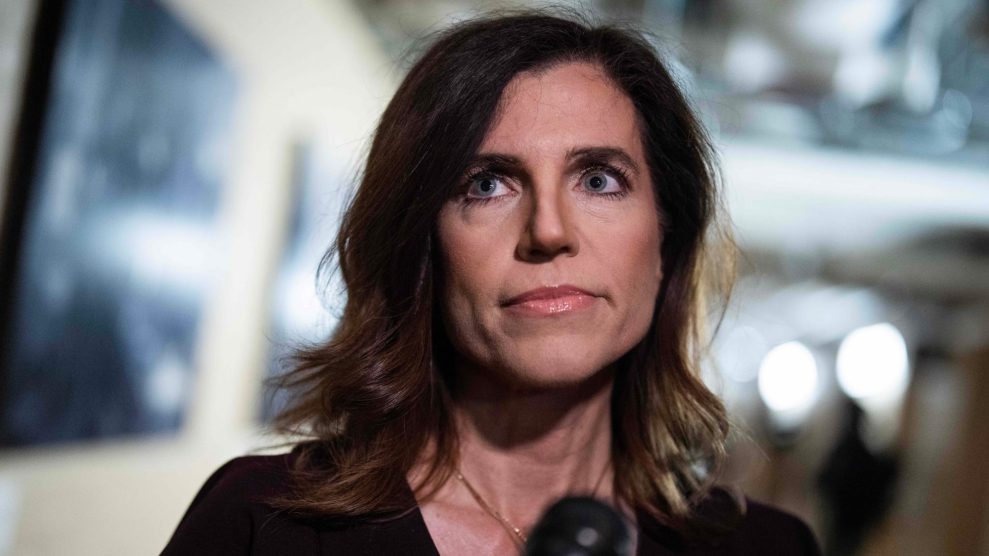
Chicken George and Tom Lea ride up front. Mingo in back. Michelle Short
So, we’ve been watching A&E/History’s Roots remake with Matthew Delmont, an Arizona State University historian who literally wrote the book on this: Out in August, Making Roots: A Nation Captivated covers the creation of Alex Haley’s fictionalized family history and the resulting 1977 miniseries on ABC—the most-watched drama in the history of television.
Yesterday, Matt and I talked about the Roots remake as an action flick, and the re-envisioning of Kizzy, Kunta Kinte’s daughter, as a warrior. (You can stream past episodes here.) Today we dig into episode 3—and, yes, there will be spoilers. This penultimate episode revolves around the upbringing of Kizzy’s son “Chicken George” (Regé-Jean Page) and George’s tricky relationship with Tom Lea (Jonathan Rhys Meyers), his ne’er-do-well master and unacknowledged father.
Michael Mechanic: Good morning, Matt! So, Snoop Dogg rants aside, people of all races seem to be welcoming this history. More than 5 million Americans watched the Roots premiere live on Monday, despite overlap with Game 7 of the NBA’s Western Conference finals. (Go Warriors!) And the remake has spawned an interesting Twitter hashtag: #RootsSyllabus.
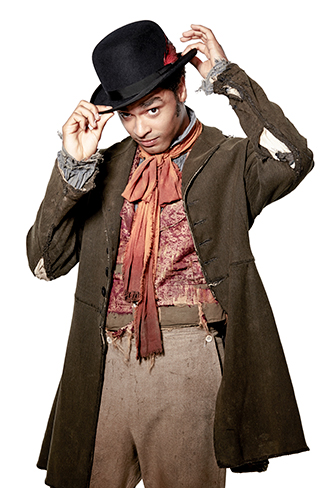
Matthew Delmont: Yes, like #FergusonSyllabus, #CharlestonSyllabus, #LemonadeSyllabus, people are using this hashtag to share books, articles, films, and other resources related to slavery and African-American history and culture. Five million viewers doesn’t seem like a lot compared to the massive audience that watched Roots in 1977, but there’s a whole different level of viewer engagement with this new Roots. Seeing people express their thoughts in real time on Kizzy, Chicken George, and Tom Lea is amazing, and then having some of the leading historians on slavery tweet to help contextualize this historical fiction is pretty cool.
MM: It’s hard not to love Chicken George. He’s this cocky, vibrant young guy who is allowed to train and fight his master’s gamecocks rather than working the fields. He’s optimistic and trusting, whereas everyone around him, from his mom to old Mingo—who teaches him everything he knows about the birds—has learned by experience that white people are not to be trusted. We also get to know Tom Lea, Kizzy’s serial rapist. He’s a small-time slave owner, an Irishman who pulled himself up by his bootstraps and aspires to be accepted by the Southern gentry. I thought the acting was superb.
MD: The dynamic among Chicken George, Tom Lea, and Kizzy was really well done. The scenes with Kizzy and Lea were difficult to watch, but they painted a clear picture of what surviving slavery looked like for Kizzy.
MM: Every time she sees George showing any kinship with master Tom—his father—it’s like a knife wound for her.
MD: Yes, and I liked the way they slowly revealed how much George knew. In the original series, there’s this tearful reveal where Kizzy tells George that the master is his father. Here he seems to surprise Kizzy by telling her he figured it out on his own. The whole dynamic again shows how tangled the idea of family is during slavery.
MM: At one point, Lea says something that hints at it, and George sort of does a double-take. I think he basically knew, but repressed the thought because he doesn’t want to endanger his position of privilege. He’s light-skinned, gets to travel with the master, gets money and prestige for his showmanship, and some nice clothes—and he isn’t subject to brutal field work. But inside, he knows.
MD: He has to deal with the knowledge that his father owns him. This episode also did a nice job of portraying a dynamic where Lea only owns a handful of slaves. When he talks to Chicken George about the possibility of George getting married, he is very clear that he expects him to keep his wife’s “belly full” in order to “increase my stock.”
MM: Let’s talk about Mingo. Chad Coleman was in The Wire, The Walking Dead—lots of stuff. And he’s perfect as the old slave who has been through the ringer and no longer trusts anyone but his roosters.
MD: Yes, Coleman was really great in this role. I like these moments when you have different black characters sort of mentoring each other, even if they do so reluctantly at first.
MM: Like with Fiddler. Both of these guys had places of relative privilege and were loath to put that at risk.
MD: It also showed how many of these enslaved characters have specialized knowledge that is really valuable. We didn’t talk about that in the last episode, but Kunta had skill with the horses, and Mingo and Chicken George have these valuable skills training the birds. What did you make of all the cockfighting? This has to be the most cockfighting on television this decade, right?
MM: Cockfighting was huge in the South—it’s still popular in some circles, although it’s now illegal in every state. But the fights were a good vehicle for the writers to get off the plantation and get outside characters involved—we get to see a wider range of Southern society and the storyline of Tom Lea’s social ambitions. He’s desperate to prove he’s not trash, and George is his means to get there. As for skills, yeah, master Tom doesn’t know shit about training roosters, which gives George leverage. At one point, George actually says to the master something like, “Well, then you can find somebody else to fight your birds.” He uses his power. Of course, it’s limited—and his cash value is obviously a double-edged sword.
MD: I think Alex Haley would have loved this episode. He did tons of research on cockfighting when he was writing Roots, and it’s clear from his notes that he was captivated by Chicken George. I was surprised at how much time we spent with Tom Lea in this episode, though. The duel scene helped convey Lea’s class-status anxiety and it also cemented his relationship with Chicken George, but it seemed thrown in to gesture toward Game of Thrones or something. Like, “Let’s get a sword fight in here!”
MM: Hmm. Was there never a duel in the original? In any case, I felt like it served a purpose: Because George saves his master’s life, Tom Lea is now beholden to him—and so it’s an even bigger deal when he betrays George.
MD: This duel scene was not in the book or the original series. I agree that it fits in the narrative. I could also see a more subtle commentary on what “civilized” white culture looks like—that you go out in a field and shoot at each other. I couldn’t help laughing when Chicken George has to encourage Lea by saying, “You the gamecock now!”
MM: Ha, yeah! There’s another purpose to that scene as well: It highlights how, if something bad happens to a master, slave families can be torn apart and sold. Which is why George and his free friend attend the duel, and why they push so hard to make sure Tom triumphs. Also, just as an aesthetic thing, this seemed like a more realistic version of what a duel might actually look like than what I’ve ever seen on TV. I mean, usually it’s the old 50 paces, turn, and shoot—and then one or both men go down. But this was a very messy affair: Tom Lea’s hand shaking with nervousness, missing the first shot, then stripping away part of his rival’s face with the second, after which the men fight on, gravely wounded, in the dirt and mud with their short swords. Very, very gritty, and so unlike the past Hollywood depictions of an old-fashioned duel.
MD: Yes, this was a very violent episode, wasn’t it? And in very different ways: The duel is bloody, Lea rapes Kizzy repeatedly, and then the gamecocks are fighting to the death every other scene. Each one has an impact on the lives and futures of the enslaved characters. One thing I liked about the cockfighting theme was the absurdity of Chicken George’s freedom turning on whether that bird won or lost.
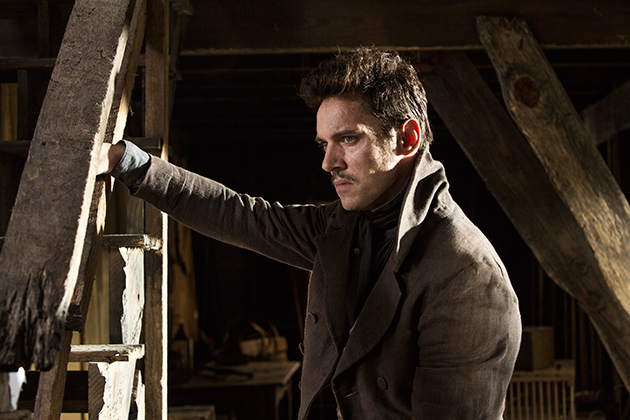
MM: George is so grateful for the opportunity, yet he’s being fucked with in a major way. Lea is betting his own son’s freedom! And then he reneges—I guess we saw that coming.
MD: And that’s why the scene and that story arc works. Things can look like they are going well, or like the master might care for his slaves (and in this case, children), but the fates of enslaved people were still tied up with the whims of slave owners. What did you think of Kizzy in this episode?
MM: She was excellent. She really captured the painful dynamic of having trained up as Kunta’s little warrior child, and here she’s losing her son to this rapist master. I also wanted to bring up the pivot around Nat Turner’s rebellion. When master Tom is told that murderous slaves are on the loose, he stops trusting George on a dime and chains him to the wagon then and there. Every slave is suddenly suspect. I think that was also the turning point for George, when he realized he was no better than the rest of them in the master’s eyes.
MD: Yes, things turn very quickly there. That line where one of the other white characters says, “Nat Turner’s a fever—you never know which nigger’s gonna catch it,” was a good encapsulation of that charged moment.
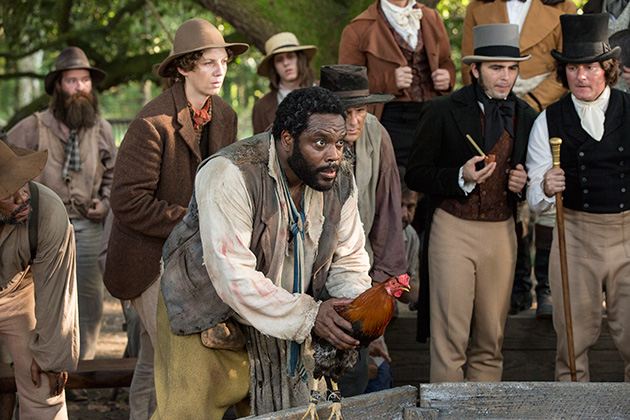
MM: How the hell is a slave supposed to protect himself from that kind of paranoia?
MD: Chicken George and Mingo become immediately suspect. It’s like it suddenly dawns on Lea and other slaveholders that enslaved people do not want to be held in bondage and might actively resist. The reference to Nat Turner also made me think of how much historical ground the series is trying to cover—how we move from the War of Independence to Nat Turner to [in the finale] the Civil War. Chunks of time keep passing by.
MM: Yeah, like that jump cut from Kizzy’s initial rape to the delivery of Chicken George. So was Nat Turner in the original Roots? It had to have been.
MD: Yes, and it was a similar kind of moment. They got the date wrong in the original series. I believe they said Nat Turner’s rebellion happened in 1841 rather than 1831. TV and history!
MM: What would you say were the most striking departures from the original Chicken George saga, not counting the duel?
MD: First, the casting: Ben Vereen played Chicken George in the original. He had the charm of the character down, but it was harder to believe that he was the son of Tom Lea, since he is a darker-skinned actor. And Vereen was about the same age as Leslie Uggams, who played his mom, Kizzy, but that’s another story. I thought Regé-Jean Page played Chicken George very well. The second thing is that, in the original, going to England is a positive opportunity. Tom Lea loses the cockfight bet, but going to England is a chance for George to leave America—he wasn’t forcibly taken away at the end of the episode like he is here. And, while I’m generally not a stickler for historical accuracy, slavery wasn’t legal anymore in England by the late 1830s, so I don’t know what is supposed to happen to George once he gets there.
MM: I had precisely the same thought.
MD: The UK passed the Slave Trade Act in 1807 and the Slavery Abolition Act in 1833. So Chicken George should be free.
MM: Well, maybe he’ll get his wish after all. So, um, how can a historian not be a stickler for historical accuracy?
MD: Well, I do a lot of TV and film history, so I try to remember that these things have to be entertaining and commercially viable first and foremost. If they can be sort of historically accurate, all the better! They had some very well-respected historians as advisers on this series and they were much more attuned to getting the details correct.
MM: Okay, best moment in episode 3?
MD: Two moments stood out: The opening scene, where we see Kizzy cleaning herself up after Tom Lea leaves [after raping her yet again]. These details would never have been shown in the original. Anika Noni Rose does an amazing job throughout, and I thought that opening scene really set the tone. And then Marcellus, the free black man who wants to buy Kizzy’s freedom, when he’s talking about how he’s free but he’s growing tired of pulling out his papers every time a sheriff gets in a mood or “some cracker doesn’t like my look.” That seemed like one of the most relevant lines for our contemporary moment. It echoes a line from episode 2, when a white patroller tells Kunta and Fiddler they can’t be in the road after dark. I have to imagine the writers were thinking about Ferguson, Baltimore, and the curfew rules.
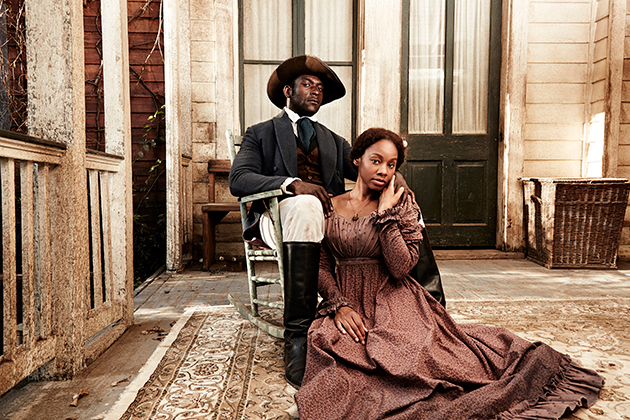
MM: We’re fearful for Marcellus—almost more so than for the slaves—because we can see how much he’s got to lose, and how much resentment some of the poor whites might have at seeing this free, fairly well-to-do black man in their midst. He would always have to be watching his back. When he rode off in that wagon alone, just going on his way, I was filled with dread that something terrible would happen to him.
MD: Anything else from this episode?
MM: I think we’ve covered it. Until tomorrow, then!
Click here for Michael Mechanic’s and Matthew Delmont’s discussion of the Roots finale.

